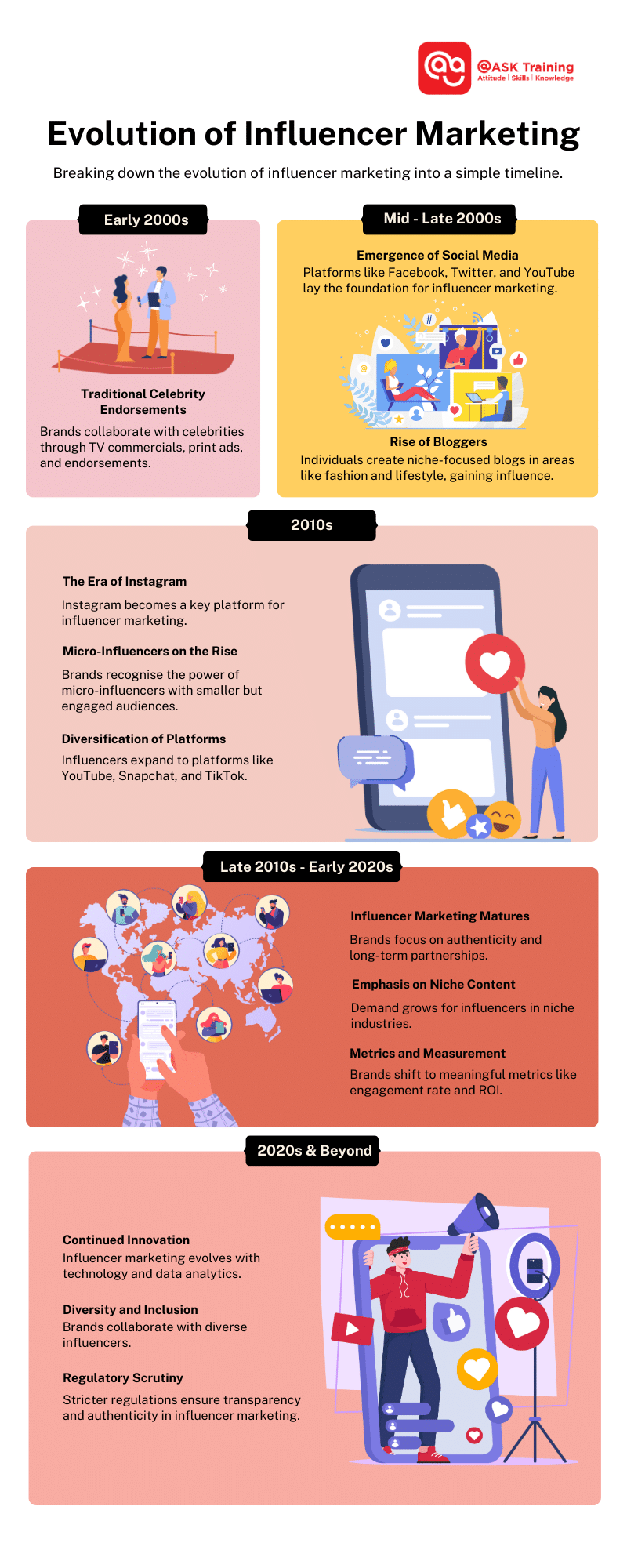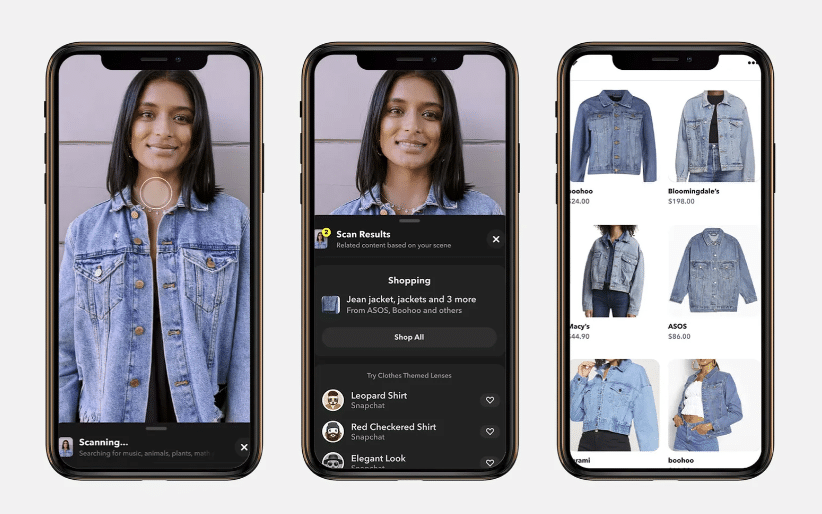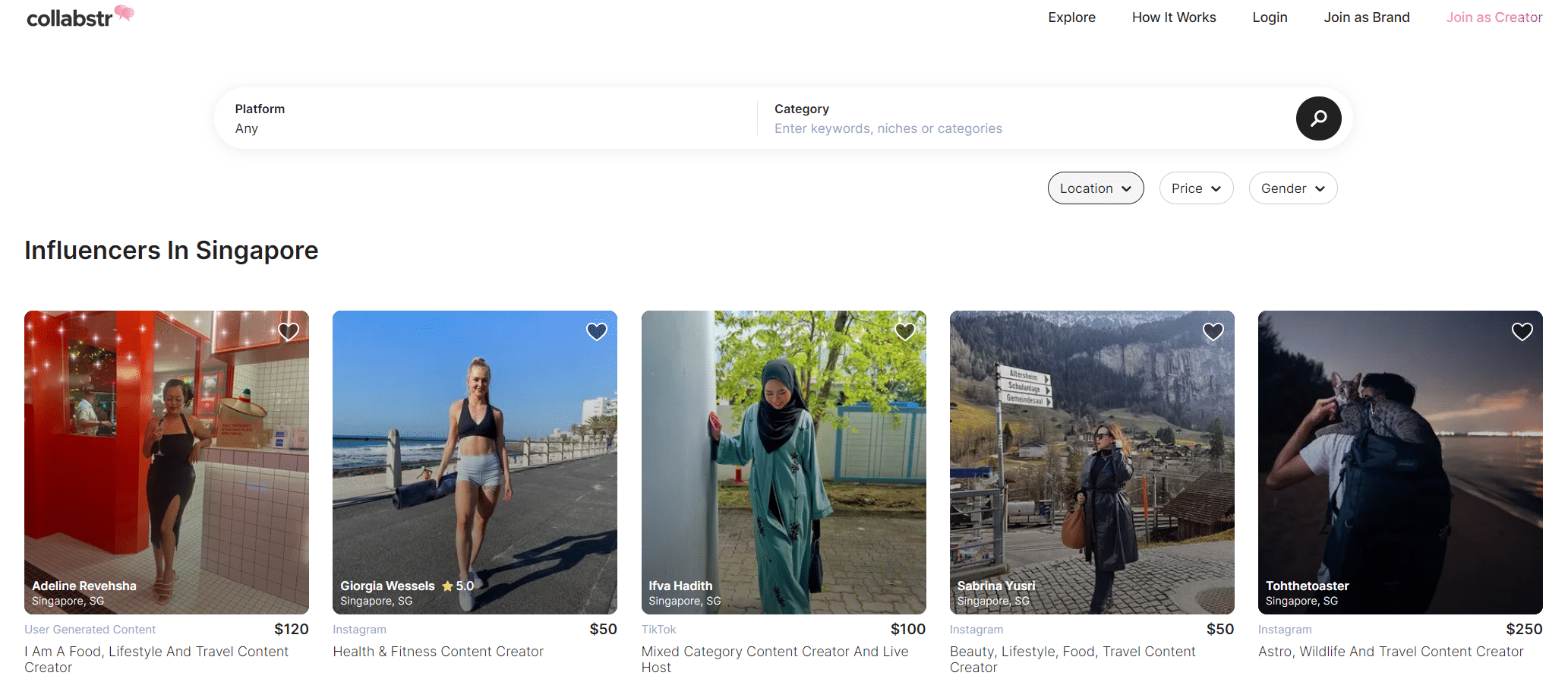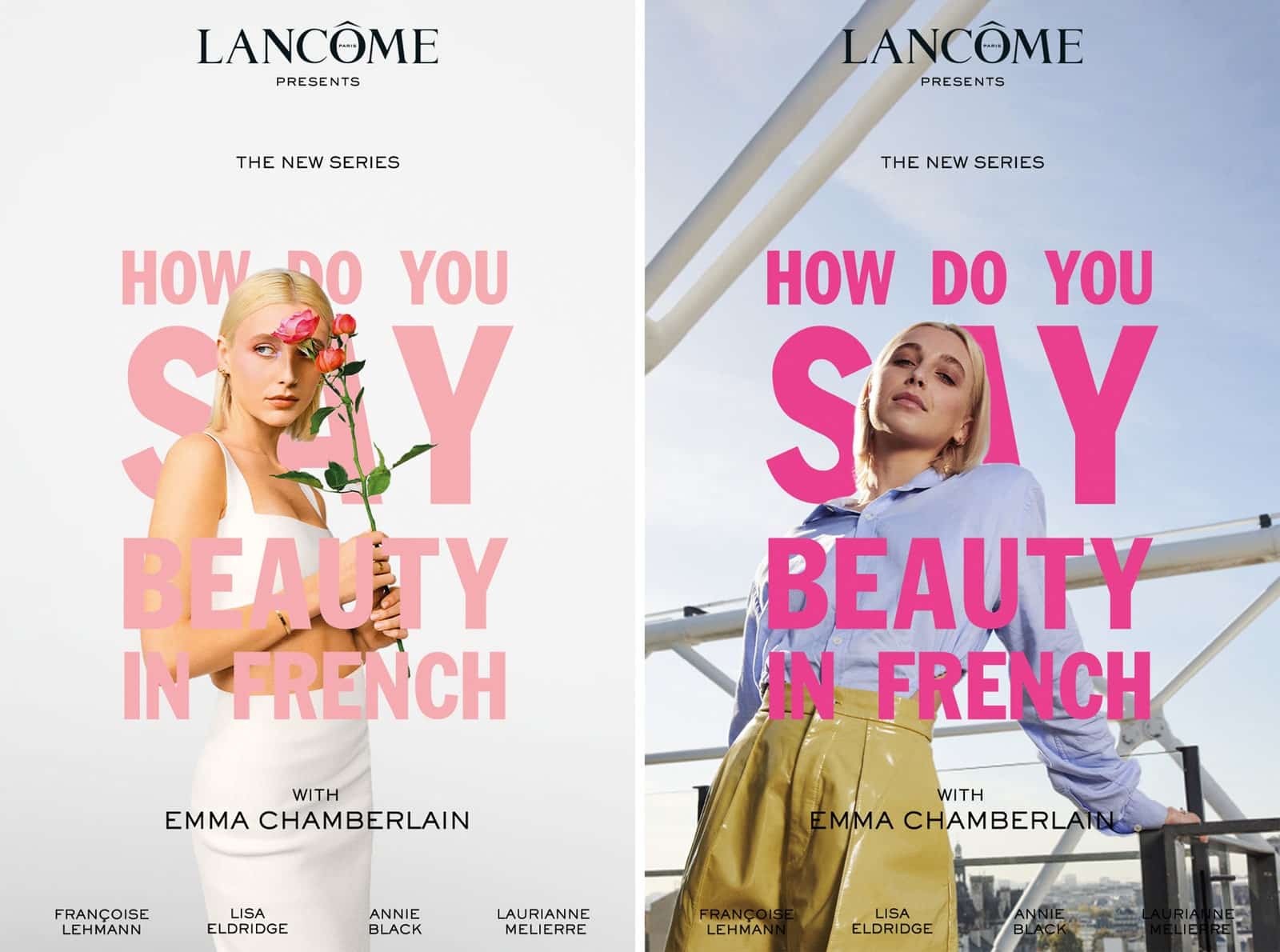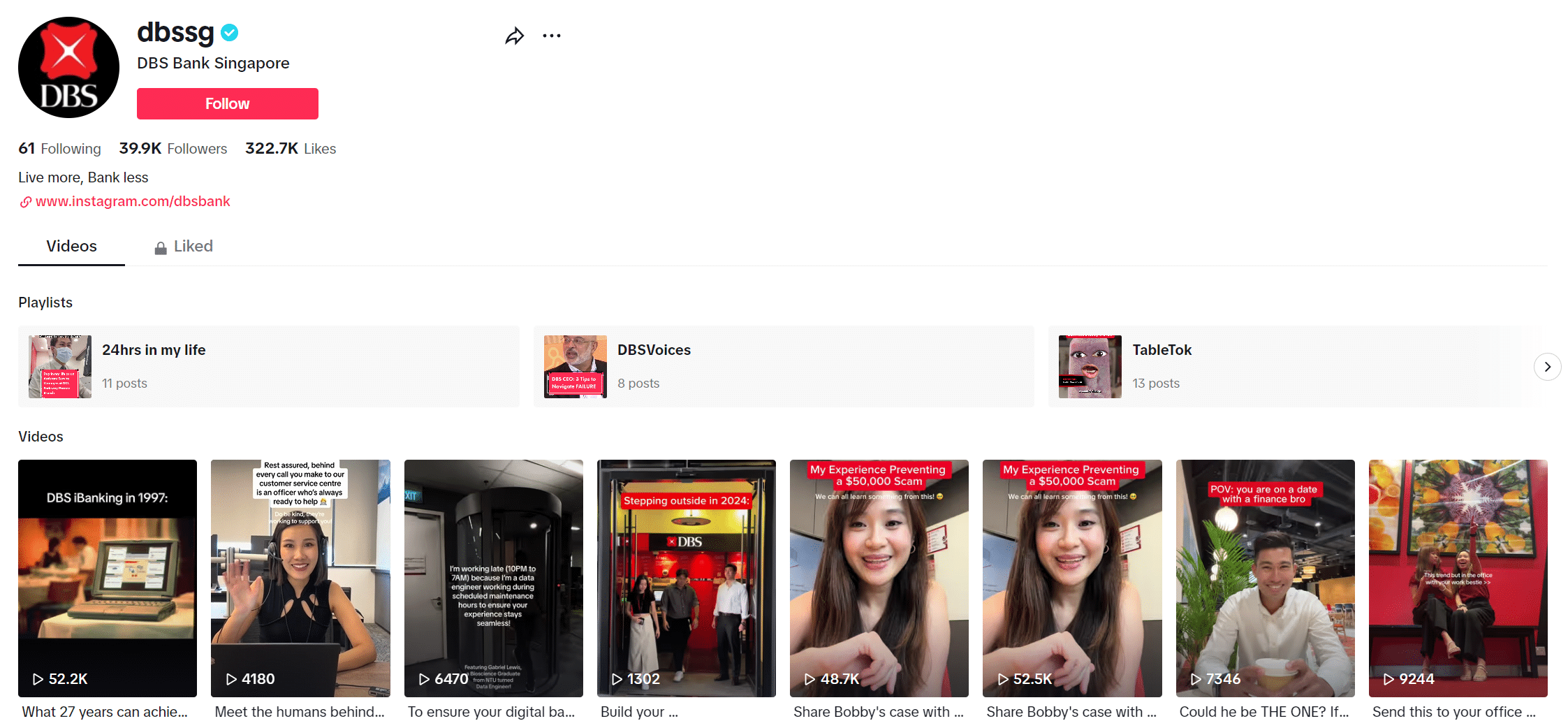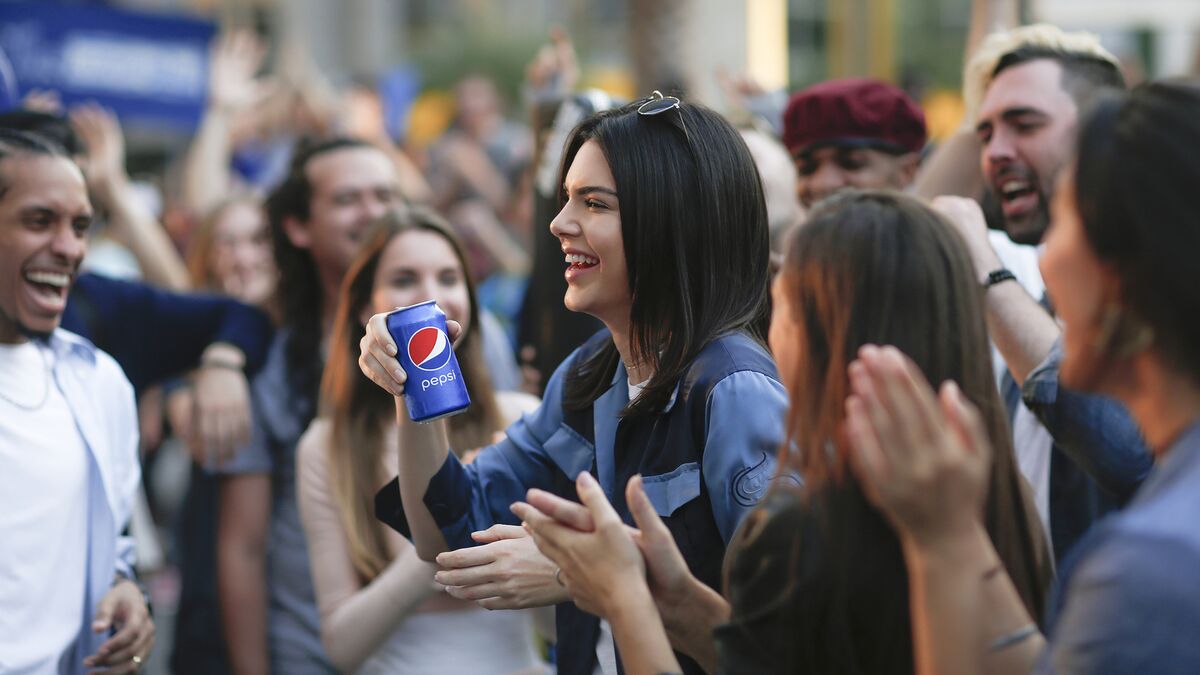In today’s digital age, where social media platforms dominate our daily lives, influencer marketing has become a powerhouse strategy for brands to connect with their target audiences.
What started as a novel approach has now evolved into a multi-billion-dollar industry, reshaping the way businesses promote their products and services.
As we step into 2024, let’s take a closer look at how influencer marketing has transformed over the years, its paramount importance in the current landscape, and what the future holds in terms of trends, challenges, and strategies.
What Does Influencer Marketing Mean?
Influencer marketing is a type of marketing where brands collaborate with individuals who have a significant following and influence on social media platforms.
These individuals, known as influencers, create content around products or services, sharing their experiences, opinions, and recommendations with their followers.
For example, a beauty brand might partner with a popular makeup artist on Instagram to showcase their latest lipstick. The makeup artist creates engaging content, like tutorials or reviews, featuring the lipstick, and their followers, who trust their expertise, might be inspired to try the product themselves.
Influencer marketing works because influencers have built strong relationships with their followers based on authenticity, relatability, and expertise in a particular niche, whether it’s fashion, fitness, travel, or technology.
When influencers recommend a product or service, their followers are more likely to listen and consider trying it themselves.
Evolution of Influencer Marketing
Not long ago, traditional advertising methods like television commercials and print ads were the primary means for brands to reach consumers.
However, with the rise of social media platforms such as Instagram, YouTube, and TikTok, a new breed of content creators emerged – influencers.
These individuals, with their authenticity, relatability, and large online followings, quickly became sought-after partners for brands looking to tap into niche markets and engage with consumers in more meaningful ways.
Let’s break down the evolution of influencer marketing into a simple timeline:
Early 2000s:
Traditional Celebrity Endorsements
Brands primarily collaborate with celebrities and well-known personalities to promote their products or services through television commercials, print ads, and endorsements.
Mid to Late 2000s
Emergence of Social Media
Platforms like Facebook, Twitter, and YouTube gain popularity, laying the groundwork for the rise of influencer marketing.
Rise of Bloggers
Individuals start creating blogs focused on specific niches like fashion, beauty, and lifestyle, gaining followers and influence in their respective communities.
2010s
The Era of Instagram
Instagram has become a dominant force in influencer marketing with its visual-centric platform, allowing individuals to share curated content and grow large followings.
Micro-Influencers on the Rise
Brands begin to recognise the power of micro-influencers – individuals with smaller but highly engaged followings within niche communities.
Diversification of Platforms
Influencers expand beyond Instagram to platforms like YouTube, Snapchat, and later TikTok, catering to different audience demographics and preferences.
Late 2010s to Early 2020s
Influencer Marketing Matures
Brands adopt more sophisticated strategies, focusing on authenticity, storytelling, and long-term partnerships with influencers.
Emphasis on Niche Content
The demand for influencers in niche industries grows, with influencers specialising in areas like gaming, finance, and sustainability gaining prominence.
Metrics and Measurement
Brands shift from vanity metrics like follower count to more meaningful metrics such as engagement rate, click-through rate, and ROI to measure the effectiveness of influencer campaigns.
2020s and Beyond
Continued Innovation
Influencer marketing continues to evolve with advancements in technology, data analytics, and influencer partnerships.
Integration of Diversity and Inclusion
Brands prioritise diversity and inclusion in influencer marketing campaigns, collaborating with influencers from diverse backgrounds and identities.
Regulatory Scrutiny
Governments and regulatory bodies impose stricter guidelines and regulations on influencer marketing to ensure transparency and authenticity.
Through this timeline, we can see how influencer marketing has evolved from traditional celebrity endorsements to a diverse and nuanced strategy that leverages the trust and authenticity of influencers across various platforms and niches.
Why is Influencer Marketing Important Today?
Fast forward to 2024, and influencer marketing has solidified its position as a vital component of any comprehensive marketing strategy.
As social media continues to play a central role in people’s lives, influencers wield significant influence over their followers’ purchasing decisions, making them invaluable assets for brands seeking to boost brand awareness, drive sales, and foster brand loyalty.
Hence, understanding why influencer marketing is important today is crucial for beginners diving into the world of digital marketing.
Here’s a breakdown:
Authenticity and Trust
In a world inundated with advertisements, consumers are becoming increasingly sceptical of traditional marketing tactics. Influencer marketing offers a solution by leveraging the trust and authenticity that influencers have built with their followers.
When an influencer recommends a product or service, their audience is more likely to trust the recommendation because it comes from someone they know and admire.
Targeted Reach
Influencers often have highly engaged audiences that align with specific demographics or interests. This targeted reach allows brands to connect with their ideal customers more effectively.
For example, a fitness brand might partner with a fitness influencer to reach health-conscious individuals interested in workout routines and nutrition tips.
Content Creation
Influencers are skilled content creators who know how to engage and captivate their audiences. When brands collaborate with influencers, they gain access to high-quality content that resonates with consumers.
This content can be repurposed across various marketing channels, helping to amplify brand messaging and drive engagement.
Social Proof and Recommendations
People tend to rely on social proof when making purchasing decisions. When they see others using and enjoying a product recommended by an influencer, it serves as validation and encourages them to try the product themselves.
Example of product recommendation (Source: Pinterest)
Influencer marketing harnesses the power of social proof by showcasing real people using and endorsing products in authentic ways.
Community Building
Influencers often foster vibrant and engaged communities around their content. By partnering with influencers, brands can tap into these communities and become part of the conversation.
This sense of community fosters brand loyalty and encourages ongoing engagement with the brand.
Measurable Results
Unlike traditional advertising methods, influencer marketing offers more robust measurement and analytics tools.
Brands can track key performance indicators such as engagement rate, click-through rate, and conversion rate to evaluate the effectiveness of their influencer campaigns and make data-driven decisions for future strategies.
By understanding the value of influencer marketing, you can effectively harness its potential to drive brand awareness, engagement, and sales in today’s digital landscape.
What Are the Current Trends in Influencer Marketing?
Let’s break down the current trends in influencer marketing for beginners, focusing on the shift towards micro and nano-influencers, the integration of augmented reality (AR) and virtual reality (VR), and the importance of authenticity and transparency:
Shift Towards Micro and Nano-Influencers
Explanation Of Micro and Nano-Influencers
Micro-influencers are individuals with a smaller but highly engaged following, typically ranging from a few thousand to tens of thousands of followers.
Nano-influencers have even smaller followings, often in the range of a few hundred to a couple of thousand followers. You can explore further on what’s the difference between micro and nano-influencers here.
These influencers are considered more relatable and authentic by their followers, as they often have closer interactions and connections within their communities compared to macro or celebrity influencers.
Reasons For Their Rising Popularity
Micro and nano-influencers have gained popularity among brands due to their highly engaged and niche audiences. Their followers trust their recommendations and are more likely to act upon them.
Additionally, working with micro and nano-influencers is often more cost-effective for brands compared to partnering with larger influencers or celebrities.
This allows brands to execute multiple campaigns with influencers across various niches, reaching different segments of their target audience.
Integration of Augmented Reality (AR) and Virtual Reality (VR)
Examples Of AR And VR In Influencer Campaigns
Brands are increasingly incorporating AR and VR technologies into influencer campaigns to provide immersive and interactive experiences for consumers.
For example, a cosmetics brand might partner with an influencer to create a virtual try-on experience using AR filters on Instagram or Snapchat.
Another example is a fashion brand collaborating with influencers to showcase virtual reality fashion shows or interactive shopping experiences, allowing consumers to explore products in a virtual environment.
Example of Farfetch Snapchat AR filter Virtual Try-On
(Source: Vogue)
Future Potential in Marketing:
AR and VR offer limitless possibilities for marketers to engage with consumers in innovative ways. These technologies have the potential to transform the way products are marketed and experienced, providing unique opportunities for storytelling and brand engagement.
As AR and VR technologies become more accessible and widespread, we can expect to see continued growth in their integration into influencer marketing campaigns, providing brands with new avenues to captivate and connect with their audiences.
Authenticity and Transparency
The Growing Demand for Authentic Content
Consumers are increasingly seeking authentic and genuine content from influencers. They value transparency and honesty, preferring content that feels real and relatable.
Brands are responding to this demand by prioritising partnerships with influencers who align with their values and share authentic experiences with their audiences.
Legal And Ethical Considerations
With the rise of influencer marketing, there has been increased scrutiny around legal and ethical considerations, such as disclosure of sponsored content and transparency about partnerships.
Regulatory bodies and social media platforms have implemented guidelines and policies to ensure transparency in influencer marketing, requiring influencers to disclose paid partnerships and sponsored content to their followers.
Understanding these current trends in influencer marketing can help you navigate the ever-evolving landscape and develop effective strategies for engaging with your target audiences authentically and ethically.
With these current trends, influencer marketing also comes with challenges. In the next part, let’s learn more about how these challenges can affect you.
What are The Challenges with Influencer Marketing?
Influencer marketing has become a powerful way for brands to connect with people online. But it’s not all easy – there are challenges to face.
From keeping up with social media changes to figuring out if it’s working, and even making sure influencers stay excited about what they’re doing, there’s a lot to consider.
We’ll break down these challenges and offer tips to help beginners manage the world of influencer marketing successfully.
Navigating Platform Changes and Algorithm Updates
Social media platforms like Instagram, TikTok, and YouTube frequently update their algorithms, affecting how content is prioritised and displayed to users.
This can impact the visibility and engagement of influencer content, making it challenging for brands and influencers to reach their target audience.
Platforms often introduce new features and formats, such as Instagram Reels or YouTube Shorts.
While these features offer opportunities for creativity and engagement, they also require influencers to adapt their content strategies to stay relevant and capitalise on emerging trends.
Measuring Return on Investment (ROI)
Measuring the ROI of influencer marketing campaigns can be complex, as it’s often challenging to attribute specific actions or sales directly to influencer content.
Additionally, traditional metrics like follower count and likes may not accurately reflect the true impact of an influencer campaign.
Despite these challenges, there are emerging tools and methods for measuring the effectiveness of influencer marketing, such as affiliate tracking, coupon codes, and unique URLs. We’ll go through some useful tools and techniques in the next section.
Brands are also taking advantage of data analytics and attribution modelling to better understand the impact of influencer content on consumer behaviour.
Dealing with Influencer Fatigue
Influencers often face pressure to consistently produce content, engage with their audience, and collaborate with brands.
This can lead to influencer burnout, where influencers feel overwhelmed, uninspired, or fatigued by the demands of their platforms and partnerships.
To combat influencer fatigue, brands and influencers can prioritise quality over quantity, establish clear boundaries and expectations, and provide opportunities for influencers to take breaks and recharge.
Collaborating on meaningful and authentic campaigns can also reignite enthusiasm and creativity.
Maintaining Authenticity and Credibility
In the age of influencer marketing, maintaining authenticity and credibility is crucial. Audiences value genuine recommendations and transparent disclosures from influencers.
Brands and influencers must be mindful of maintaining authenticity by only promoting products or services that align with their values and interests.
Additionally, transparent disclosure of sponsored content helps to build trust with followers and ensures compliance with regulatory guidelines.
Understanding and addressing these challenges is essential for brands and influencers to navigate the complexities of influencer marketing successfully.
By staying informed and adaptable, you can overcome these obstacles and connect with your target audience authentically and effectively.
What Strategies Are Effective in Influencer Marketing?
Influencer marketing can feel overwhelming, but with the right strategies, it becomes much easier to navigate. These strategies help you and your brands connect with your audience in genuine and effective ways.
From using data and analytics to building long-term partnerships, diversifying platforms, and repurposing content, we’ll break down each strategy with simple tips and examples to help you get started!
Using Data and Analytics to Your Advantage
Importance of Data-Driven Decisions
Before partnering with influencers, you need to conduct audience research and segmentation to understand the demographics, interests, and behaviours of your target audience.
For example, a skincare brand might use data to identify that its target audience is predominantly women aged 18-35 interested in cruelty-free and sustainable beauty products.
By analysing data, you can identify influencers whose followers match your target audience profile, ensuring your campaigns resonate with the right people and drive meaningful engagement.
Additionally, it’s crucial to assess influencers’ engagement rates to ensure that their audience is actively interacting with their content, further maximising the effectiveness of your influencer partnerships.
For more detailed information, you can explore further in this Benchmark Report 2024.
Tools and Techniques for Effective Analysis
Tools like Hootsuite, Sprout Social, and Google Analytics provide insights into audience demographics, engagement metrics, and campaign performance.
For instance, if your client is a fashion brand partnering with an influencer, you can track website traffic and sales attributed to the influencer’s promotional posts using Google Analytics.
You can also utilise influencer marketing platforms like AspireIQ or Influencity, which offer detailed analytics and reporting features to measure the impact of influencer campaigns and optimise strategies based on data-driven insights.
If you’re looking to target more local audiences in Singapore and its surroundings, here are a few tools that can benefit you:
1. Collabstr
A Singapore-based influencer marketing platform that connects brands directly with influencers across Instagram, TikTok, and YouTube. It offers a user-friendly search tool, secure purchases, high-quality content delivery, instant chat with influencers, and secure payment handling for a smooth influencer marketing experience.
2. Starngage
An influencer marketing platform for Instagram that enables brands to launch and measure digital campaigns. It empowers brands to partner with everyday influencers, offering services like Targeting, Identifying, Amplifying, and Tracking. StarNgage also guides setting influencer marketing goals and KPIs for effective campaigns.
3. Influence.co
A directory and portfolio site designed for influencers to showcase their work and collaborate with brands. It features a content library showcasing past collaborations and provides comprehensive details for evaluation. This platform is particularly beneficial for small businesses seeking to connect with relevant influencers at no cost.
Fostering Long-Term Partnerships
Long-Term Collaborations
Long-term partnerships allow brands and influencers to develop a genuine connection with their audience over time, fostering trust and authenticity.
One example of a long-term partnership between a brand and an influencer is the collaboration between Lancôme and lifestyle influencer Emma Chamberlain, initially for skincare product promotion and later for co-creating a makeup collection.
(Source: Vogue)
Their ongoing partnership extends to seasonal campaigns and community events, fostering brand loyalty and engagement among Emma’s younger audience while embodying Lancôme’s values.
Through consistent collaboration, influencers become brand advocates, seamlessly integrating products into their content, and sharing authentic experiences with their audience, resulting in higher engagement and brand loyalty.
Mutually Beneficial Relationships
Brands invest in building strong relationships with influencers by offering them exclusive perks, access to new products, and opportunities for creative input.
For instance, Nike’s long-term partnership with professional athletes like Serena Williams and LeBron James goes beyond sponsorship deals, with athletes actively involved in product development and marketing campaigns.
By fostering mutual respect and trust, brands and influencers create beneficial partnerships for both parties, driving sustained success and impactful storytelling that resonates with audiences.
Diversifying Platforms and Formats
Exploring Beyond Mainstream Platforms
Brands recognise the value of diversifying their presence across various social media platforms to reach different audience segments.
For example, Glossier successfully expanded its influencer marketing efforts to platforms like TikTok, leveraging the platform’s short-form video content and Gen Z audience to drive brand awareness and engagement.
By exploring niche platforms like Twitch for gaming enthusiasts or LinkedIn for professionals, brands can tap into specialized communities and connect with audiences in more targeted and meaningful ways.
Utilising Various Content Formats
Influencers utilise diverse content formats to engage audiences and tell compelling stories. Such as fitness influencers may host live workout sessions on Instagram or Facebook, providing real-time interaction and motivation for their followers.
Brands collaborate with influencers to create podcasts or audio content that resonates with their audience’s interests and preferences.
For example, Sephora partnered with beauty influencers to launch “Sephora Sessions,” a podcast series discussing skincare, makeup tips, and industry trends.
Content Repurposing to Maximise Effort
Brands repurpose influencer-generated content across multiple channels to extend its lifespan and reach.
For example, a travel influencer’s Instagram photos showcasing a hotel stay can be repurposed into blog posts, Pinterest pins, or Facebook ads to target different audiences and drive traffic.
By repackaging and repurposing content, you can maximise the impact of influencer campaigns and create a cohesive brand experience across various touchpoints, reinforcing key messaging and driving engagement.
In implementing these strategies into your influencer marketing, you can optimise your influencer marketing efforts and achieve meaningful results in engaging your target audience while driving brand awareness and loyalty.
Case Studies
To help you understand how these strategies work in the real world, let’s take a look at some real influencer marketing campaigns – the ones that worked well and the ones that didn’t. Think of it like learning from other people’s successes and mistakes.
This will provide you with a well-rounded perspective, equipping you with the knowledge to effectively navigate the world of influencer marketing, whether you’re a beginner or looking to refine your approach.
Successful Campaigns
1. DBS Singapore TableTok Series
DBS Singapore TikTok (Source: TikTok)
In 2023, DBS Singapore, a leading bank, launched a successful influencer campaign on TikTok to promote its digital banking services.
They partnered with popular TikTok creators to create a series of engaging and informative videos showcasing the convenience and benefits of using DBS’s mobile banking app.
Execution:
The campaign featured a variety of content formats, including comedic sketches, tutorials, and challenges, tailored to resonate with TikTok’s predominantly young and tech-savvy audience.
Creators shared their experiences using DBS’s digital banking features, such as instant transfers, contactless payments, and budgeting tools, in a fun and relatable manner.
Outcome:
Through strategic collaborations with influencers who had a strong presence on TikTok, DBS effectively increased brand awareness and engagement among millennials and Gen Z consumers. The campaign’s creative and authentic approach resonated with the audience, resulting in over 10.5 million views and nearly 9,000 engagements across 18 episodes.
These metrics reflect the campaign’s effectiveness in sparking conversations and genuine interest in financial planning among viewers. Additionally, the influencer collaboration extended to the personal platforms of the TikTokers, generating an additional 200,000 reach and 10,000 engagements across Instagram and TikTok.
This showcases the campaign’s broad impact and success in reaching and engaging the target audience.
Lessons Learned and Best Practices:
- Understanding the platform: DBS recognised the popularity of TikTok among younger demographics and tailored its campaign to align with the platform’s creative and informal nature.
- Authenticity and relatability: By partnering with TikTok creators who had an established presence and authenticity on the platform, DBS ensured that their messaging felt genuine and relatable to the audience.
- Educational content: DBS provided valuable information about their digital banking services through entertaining and educational content, demonstrating the app’s features and benefits clearly and engagingly.
- Consistency and frequency: DBS maintained a consistent presence on TikTok with a series of videos released over time, keeping the audience engaged and reinforcing key messaging about their digital banking offerings.
2. HelloFresh
(Source: Medium)
HelloFresh, a meal kit delivery service, implemented a highly successful influencer marketing campaign focusing on micro-influencers to promote its convenient and nutritious meal solutions.
HelloFresh conducted thorough research to identify micro-influencers whose values and interests aligned closely with their brand. They looked for influencers who were passionate about cooking, meal preparation, and healthy eating, as these topics resonated with HelloFresh’s target audience.
Additionally, they considered factors such as engagement rates, audience demographics, and the authenticity of the influencer’s content to ensure a genuine connection with their followers.
Execution:
HelloFresh strategically identified micro-influencers whose values aligned with their brand. These influencers, although smaller in reach, had highly engaged audiences, making their endorsements more impactful.
Instead of scripted ads, HelloFresh empowered influencers to create authentic content. This included cooking tutorials, recipe inspiration, and genuine reviews, fostering a deeper connection with their audience.
HelloFresh also asked influencers to chat with their followers and share their cooking adventures. This made everyone feel like they were part of a community!
And to make sure everything was working well; HelloFresh kept an eye on how many people liked and shared the influencer’s posts. This helped them make changes if needed to make their ads even better.
Outcome:
HelloFresh’s collaboration with micro-influencers resulted in heightened campaign effectiveness, leading to increased engagement and conversion rates. By working with over 1,200 influencers, HelloFresh acquired more than 10,000 new customers and attracted an additional 2,700 sign-ups.
This cost-efficient approach to customer acquisition allowed HelloFresh to maximise its marketing budget. Additionally, their partnerships with micro-influencers enabled them to engage with new audience segments, thereby expanding their reach and increasing brand awareness.
Lessons Learned and Best Practices:
- Make Genuine Connections: HelloFresh showed that building real relationships with micro-influencers is key. They reached out personally to influencers who genuinely cared about cooking and eating healthy, ensuring a genuine connection.
- Authenticity Matters: Instead of scripted ads, HelloFresh let influencers create their own content. This made their endorsements feel real and trustworthy to their followers.
- Engage with Audience: HelloFresh encouraged influencers to talk directly to their followers and encourage them to share their own HelloFresh experiences. This helped create a sense of community and engagement around the brand.
- Measure and Adapt: HelloFresh kept track of how well each influencer’s posts were doing and used that data to make their campaigns even better. By constantly learning and adjusting, they were able to make the most of their partnerships with micro-influencers.
- Choose the Right Partners: HelloFresh carefully selected influencers who matched their brand values and had the right audience. This ensured that their message reached the right people in a way that felt authentic and genuine.
Unsuccessful Campaigns
1. Shein
Source: Shein
Shein, a fast-fashion giant, has faced considerable backlash in its influencer marketing efforts, primarily due to issues surrounding transparency, sustainability, and ethical standards.
What Went Wrong:
Firstly, the brand was criticised for its perceived lack of transparency and ethical standards in influencer collaborations. Many influencers were accused of promoting Shein products without disclosing their paid partnerships, blurring the distinction between authentic recommendations and sponsored content. This lack of transparency eroded trust among consumers, who felt misled by influencers’ endorsements of Shein products.
Secondly, Shein was condemned for promoting unsustainable fast-fashion practices, including excessive consumption, low-quality products, and exploitative labour practices in its manufacturing processes. Influencers who partnered with Shein were accused of perpetuating these issues by glamorising and normalising fast fashion without addressing its environmental and ethical implications.
Lastly, Shein faced backlash for its insensitive marketing campaigns and controversial product offerings, including accusations of cultural appropriation, body shaming, and promoting harmful stereotypes.
Lessons Learned:
Shein’s influencer marketing debacle highlights the importance of transparency, sustainability, and sensitivity in brand collaborations. Brands and influencers must prioritise transparency and authenticity to build trust with their audience.
Additionally, brands should consider the environmental and social impact of their actions, promoting more sustainable and ethical practices. Lastly, brands must be mindful of cultural sensitivities and avoid perpetuating harmful stereotypes or offensive messaging.
2. Pepsi & Kendall Jenner
Source: Bloomberg
Kendall Jenner’s partnership with Pepsi in a 2017 ad campaign sparked significant backlash and is often cited as an example of failed influencer marketing. In the ad, Jenner is depicted as joining a protest and diffusing tension by handing a can of Pepsi to a police officer.
What Went Wrong:
The Pepsi ad featuring Kendall Jenner faced significant backlash for several reasons. Firstly, it was criticised for trivializing serious social justice movements like Black Lives Matter by suggesting that a can of soda could solve complex issues of police brutality and activism. This approach was seen as insensitive and disrespectful to the struggles of marginalized communities.
Secondly, the ad lacked authenticity, with Jenner’s involvement appearing more as a commercial opportunity rather than a genuine commitment to social change. This lack of authenticity undermined the credibility of both the brand and the influencer, leading to widespread criticism and backlash.
Lastly, the ad failed to connect with its audience. Instead of inspiring positive sentiment or brand affinity, the ad reinforced negative stereotypes and perpetuated a sense of corporate exploitation of social causes.
Lessons Learned:
The backlash against the Pepsi ad with Kendall Jenner offers valuable lessons for brands and influencers alike.
Firstly, it underscores the importance of authenticity. Brands and influencers must prioritize authenticity and sincerity in their partnerships and campaigns to build trust with their audience.
Secondly, it highlights the importance of understanding social context. Campaigns should be sensitive to broader social issues and avoid playing down or exploiting important social movements for commercial gain.
Lastly, it emphasises the need for responsibility and accountability. Brands and influencers have a responsibility to use their platforms responsibly and ethically, ensuring that their messaging aligns with values of social responsibility and inclusivity.
By reflecting on these lessons and applying them to future campaigns, brands and influencers can avoid similar pitfalls and build more meaningful and impactful partnerships with their audiences.
What Does the Future Hold for Influencer Marketing?
As we look ahead to the next five years, the landscape of influencer marketing is poised for further evolution and innovation. Here are a few key points to anticipate:
Rise of Micro and Nano-Influencers</em >: Expect a continued increase in the prominence of micro and nano-influencers due to their authentic connections with niche audiences, offering brands more targeted and engaged communities.
Impact of Emerging Technologies</em >: Keep an eye on the potential impact of emerging technologies such as augmented reality (AR) and virtual reality (VR), which can revolutionise how brands engage with their audiences, offering unique and interactive experiences.
Agility and Adaptability</em >: Stay agile and adaptable in the face of future shifts in the landscape by investing in data-driven strategies, staying updated on emerging trends and technologies, and prioritising authenticity and transparency in influencer partnerships.
By embracing these key points and preparing for the future of influencer marketing, brands can continue to take advantage of influencer partnerships to connect with consumers in more meaningful and impactful ways.
Recent Influencer Marketing Insights (June 2025)
The landscape of influencer marketing is rapidly evolving, with new technologies and regulations reshaping how brands collaborate with creators. Here are the latest developments to watch:
AI-Driven Content & Virtual Influencers
TikTok’s AI Avatars for Sponsored Content
- Brands can now auto-generate influencer-style videos using hyper-realistic AI avatars via TikTok’s Symphony Avatar, streamlining content production.
- While efficient, this has sparked debates about transparency, as audiences demand clear distinctions between human and AI endorsements.
India’s Virtual Travel Influencer
Radhika, AI Traveller (Source: Instagram)
- Meet Radhika Subramaniam, the country’s first AI-generated travel influencer, launched in May 2025.
- Powered by storytelling algorithms and localised data, her content offers brands a low-cost, high-engagement solution for regional markets, blending tech innovation with cultural relevance.
New FTC Rules on AI Disclosures
In early 2025, the U.S. Federal Trade Commission (FTC) introduced strict guidelines requiring:
- Clear labelling of AI-generated influencer content, especially in regulated sectors like health, finance, or children’s products.
- Explicit disclosures when virtual personas are not human, setting a global precedent for ethical synthetic endorsements.
These updates highlight the growing intersection of technology and authenticity in influencer marketing. Brands must balance innovation with transparency to maintain audience trust.
Excited to Start Influencer Marketing?
Summing up what we’ve learned, influencer marketing is a big deal in today’s marketing world. We’ve talked about how it started and why it’s so important now in 2024. We’ve explored cool trends like using micro and nano influencers and new tech like AR and VR.
We’ve also looked at the challenges brands face, like keeping up with social media or algorithm changes and making sure influencers are authentic. But despite these challenges, the future looks bright. We predict a continuous increase in micro-influencers, longer partnerships, and keeping yourself adaptable.
So, as we wrap up, remember that influencer marketing is all about connecting with people in a real and meaningful way. By staying flexible and honest, brands can forge deeper connections with their audience and thrive!
Adding influencer marketing to your digital marketing strategy can significantly increase engagement and brand visibility.
If you’re looking to enhance your digital marketing skills, ASK Training specialises in digital marketing training programmes that are recognised by industry experts and designed to meet today’s digital demands.
Check out our Digital Marketing courses to find out more!
Related Courses
- WSQ Social Media Marketing Course
- WSQ Advanced Social Media Management Course
- Diploma in Digital Marketing
◆◆◆


